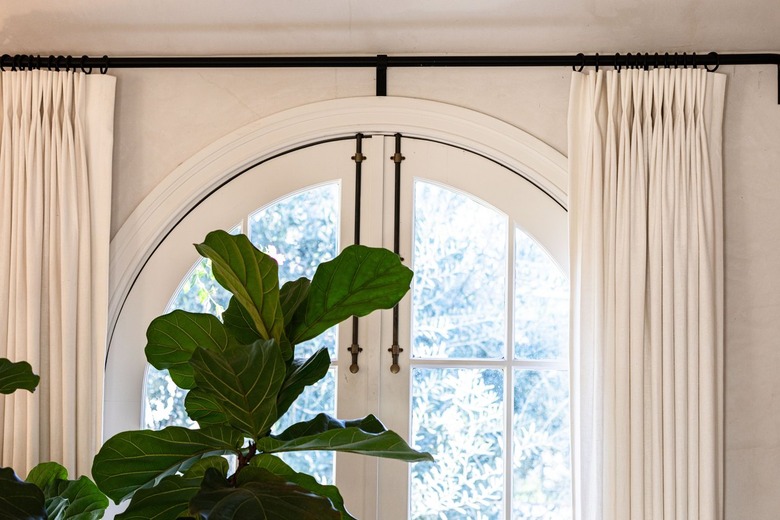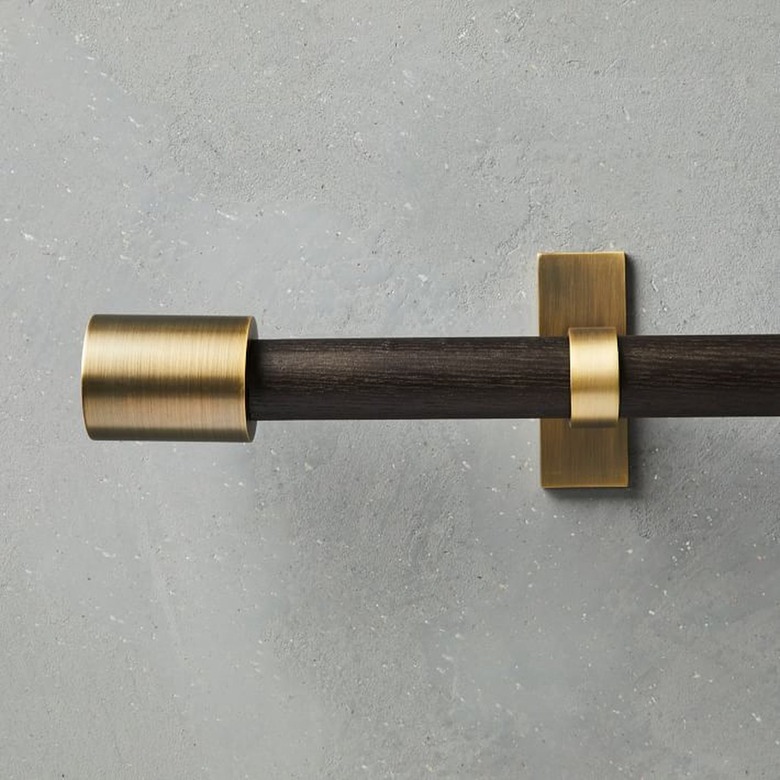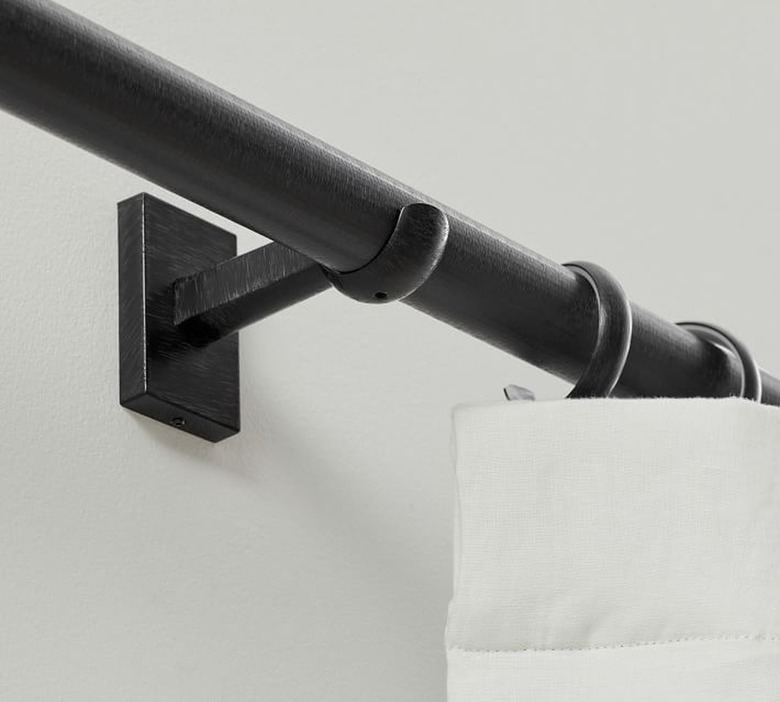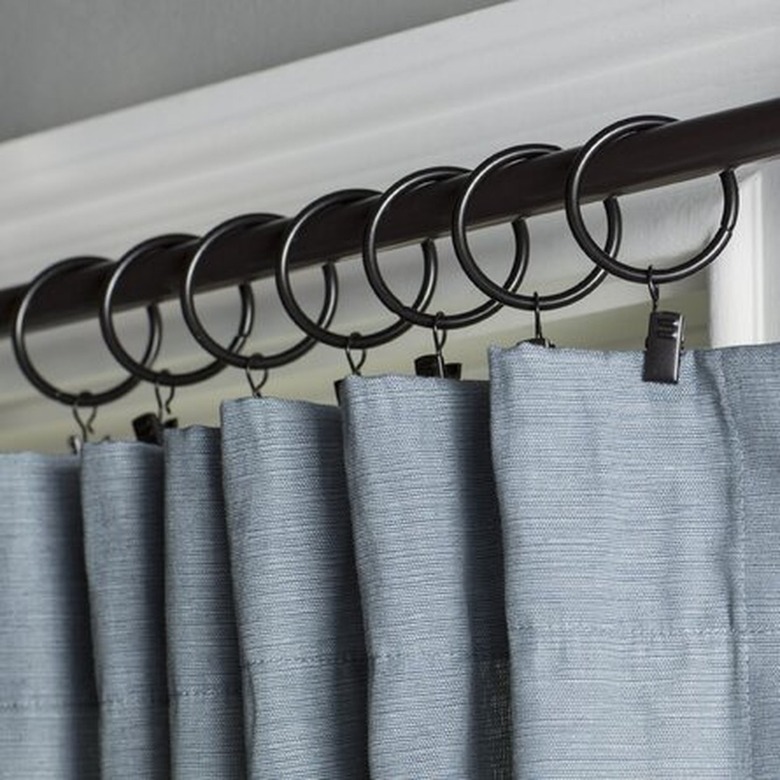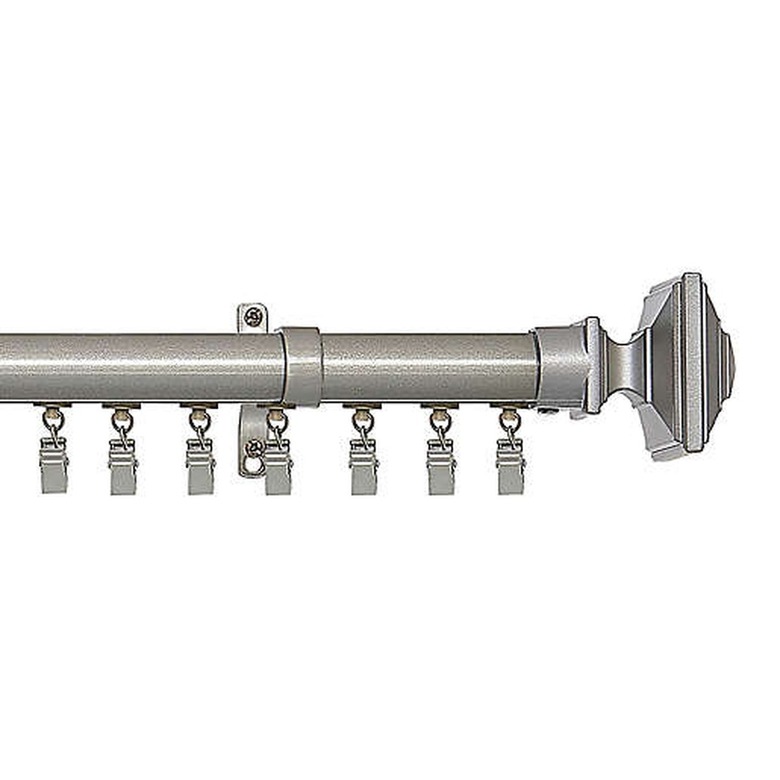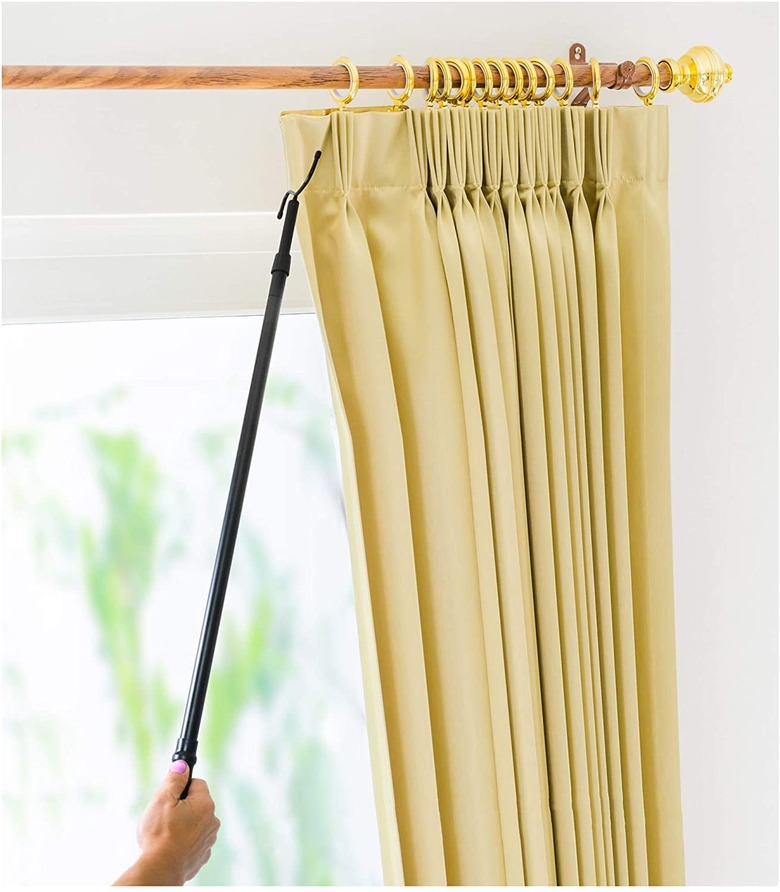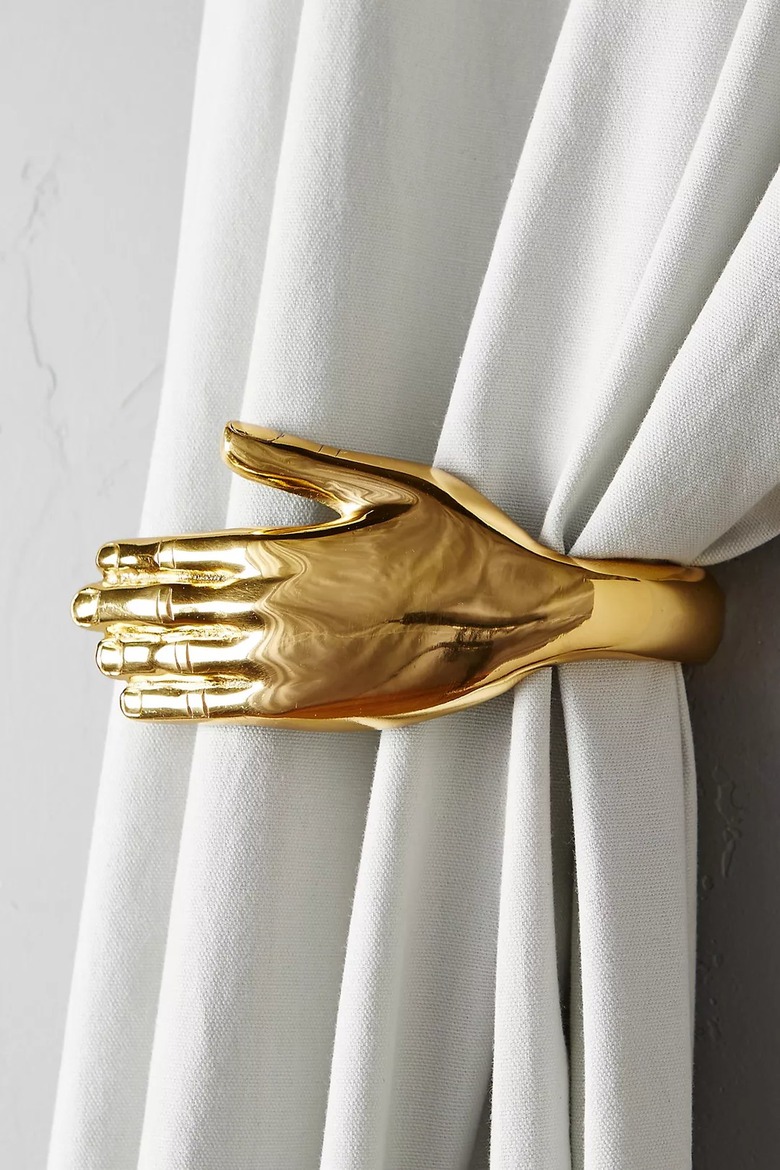The 6 Types Of Drapery And Curtain Hardware — And How To Use Them
We may receive a commission on purchases made from links.
Draperies are multifunctional in a room — they offer privacy, light filtration, and style. But in order to get all three, you'll need the right equipment. After you've purchased your drapery panels and curtain rods, you may find that you want additional hardware to get the look and light that you want in a room.
Not sure what pieces you need for your specific setup? Here are six types of drapery hardware, and advice on where and how to use them.
1. Finials and End Caps
1. Finials and End Caps
Both finials and end caps are the pieces that sit on the end of a curtain rod, but the two are different in terms of appearance. As the name implies, end caps are a simple way to cap off a curtain rod to prevent the curtain from sliding off the end. They are not designed to be stylish and are typically just a flat circle that is slightly larger than the curtain rod.
On the other hand, finials are more eye-catching pieces set on the ends of a curtain rod that prevent the curtains or the curtain hooks from sliding off. Finials can dramatically impact the look of window treatments, adding a little dramatic flair or a subtle touch of elegance. While finials are interchangeable, you want to ensure that you use a finial that is suitable for the width of your curtain rod since you don't want one that's way too large or small.
Decorative finials come in a wide variety of styles and designs, including pewter birds, sparkling jewels, delicate leaves, and ornate urns. While decorative finials are most commonly used on a single curtain rod, they can also be added to the outermost rod on triple or double curtain rods.
2. Curtain Rod Brackets or Sconces
2. Curtain Rod Brackets or Sconces
Though not every type of curtain rod requires brackets or sconces — which hang and support a curtain rod on the wall — you'll most likely need them if you have a large window or heavy curtains.
Brackets are typically made from either metal or wood, and they may be secured to the ceiling or the wall above or beside the window frame. Most curtain rod brackets are used more for their functionality than their design, but there are many decorative brackets available if you want your mounting method to be a little more eye-catching.
Brackets are made either in a loop or hook shape. Some hooked brackets simply require the rod to be set in place, but others secure the rod in place with a small screw in the back. Looped brackets, however, require the curtain rod to be slid through a hole. While you do not need finials or end caps for rods that are screwed in place, if you use a loop bracket and choose to add these accessories for a decorative touch, they can be fitted in place after the rod is secured through the bracket.
When it comes to really dramatic mounting options, though, a wall sconce is a great option. These are larger support pieces that are typically made from wood or resin — and the curtain rod is slid through before the finials or end caps are added at the ends.
Whether you choose brackets or sconces, you'll need to install your supports at least a few inches away from the edges of the window frame to provide space for your curtains to open all the way. Café curtain brackets should be placed along the center of the window, but otherwise, the brackets should be 4 to 6 inches above the window, which will make it look larger.
Tip
Longer curtain rods require a support bracket — whether a sconce or a bracket — every 36 inches to prevent sagging. So, if you have larger windows keep this in mind as you buy your hardware.
3. Curtain Rings
Though grommets or curtains with built-in pockets do not need additional curtain hardware to secure the panels, flat or pleated curtains require curtain rings. These are sold in solid loops or in C-shapes, and the diameter should be 1 inch larger than the curtain rod to ensure they slide easily. When using a longer curtain rod with a support bracket in the middle, use C-shape loops because they allow the curtains to slide past the bracket.
Curtain loops may be sold with an attached clip or with a small ring that will be attached to a clip or a drapery pin. Clips are easier to use because you simply clip them to the top of the curtain (though if you have pleated drapes, you may need to experiment with how the clip will best attach with the specific pleat design). Drapery pins are sharp hooks that stick into the back of the curtains. Many designers prefer pins because they are invisible, leaving only the curtain loops to be seen above the curtain. But whether you use pins or clips, they should be attached to the curtains every 4 to 6 inches to ensure the curtains slide properly.
It's worth mentioning that pocket curtains can still be attached to a rod using curtain rings. They simply need to be clipped at the top or pinned in the back like flat panel curtains. If you want to open the curtains a lot, it's typically preferable to use curtain rings because they tend to slide better.
4. Traverse Rods
4. Traverse Rods
Traverse rods are one of the only curtain rod types with its own hardware to secure draperies. These drapery track systems can be attached to either clips or pins and essentially have built-in curtain rings. Some of these tracks are even motorized, making opening the curtains particularly easy. Like curtain rings, pocket curtains can still be used with traverse rods by clipping them into the track.
5. Curtain Pulls
5. Curtain Pulls
Curtain pulls are not a necessity, but a curtain pull, often called a wand, can make it much easier to open or close your draperies by simply pulling the wand along the rod. Traverse rods are often sold with a built-in wand that pulls the drapes along the track, but you can add one to just about any drapery setup by using a wand that fits around the curtain rod and clips to the curtain panel.
If you plan to use your curtains a lot, it's best to use a pull, or if you have a particularly long curtain, you might instead invest in a motorized drapery track that allows you to open and close your window treatments with a remote or even by using your voice as part of a smart home system.
6. Holdbacks and Tiebacks
6. Holdbacks and Tiebacks
Like a curtain pull, holdbacks and tiebacks are entirely optional, but they can improve both the appearance and functionality of your curtains by providing a stylish and effective method to hold draperies in place while they're open. This makes it easier to let in natural light, even if your drapes don't slide very well along the rod.
Holdbacks are hook-shaped pieces made from metal that hold curtains in place. They are installed a few inches in from the edge of the window frame, approximately a third of the way from the bottom of the curtain.
Tiebacks are made from soft materials, typically strips of fabric or rope cords. They are wrapped around the curtain, and the two ends are tied together or secured to the wall, typically with a hook but occasionally with other hardware, such as a metal snap or even a magnet. When purchasing tiebacks, it's particularly important to choose a fabric that accents your curtains. Like holdbacks, these should be tied a third of the way from the bottom of the draperies. If they are secured to the wall, they should be attached about 3 inches farther out than the end of the curtains. Tiebacks can also be used in the center of a curtain secured to a French door for an eye-catching hourglass shape that lets in a little light around the edges.
